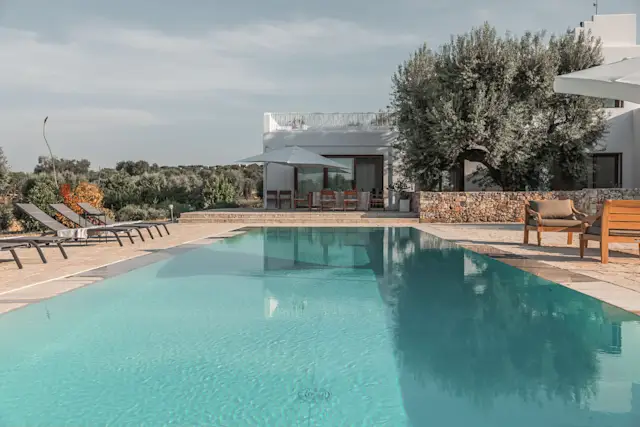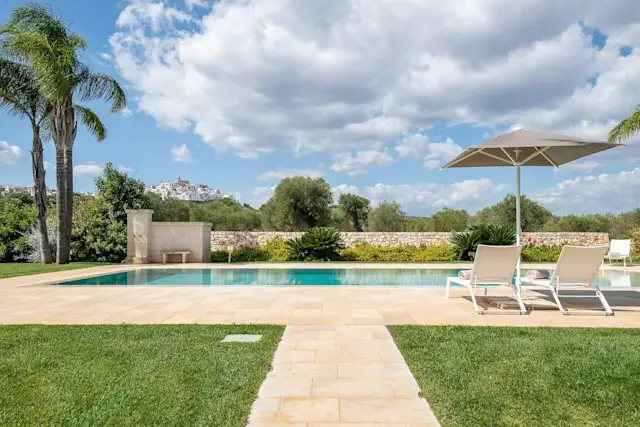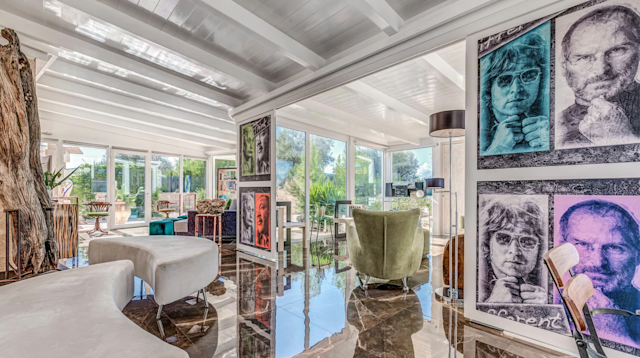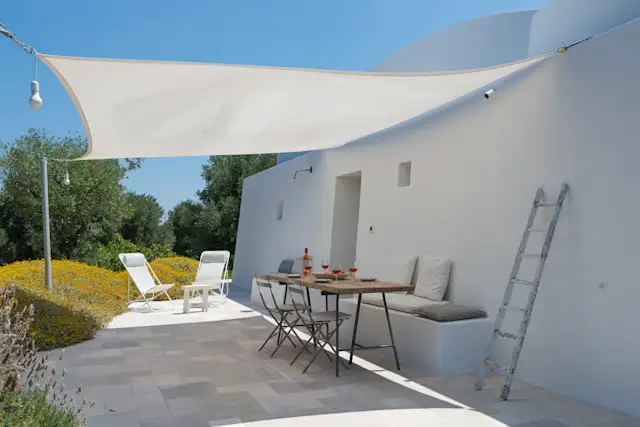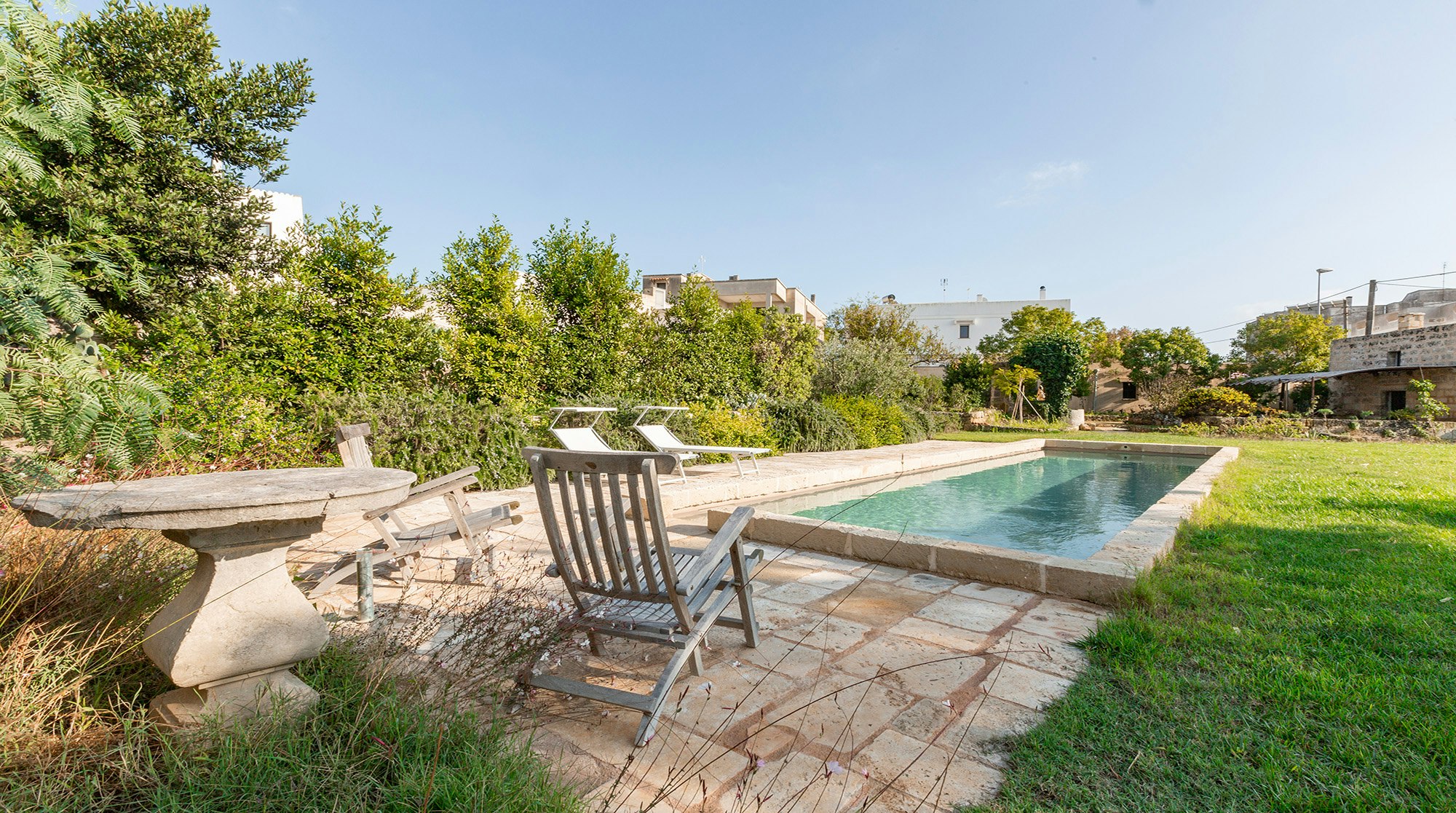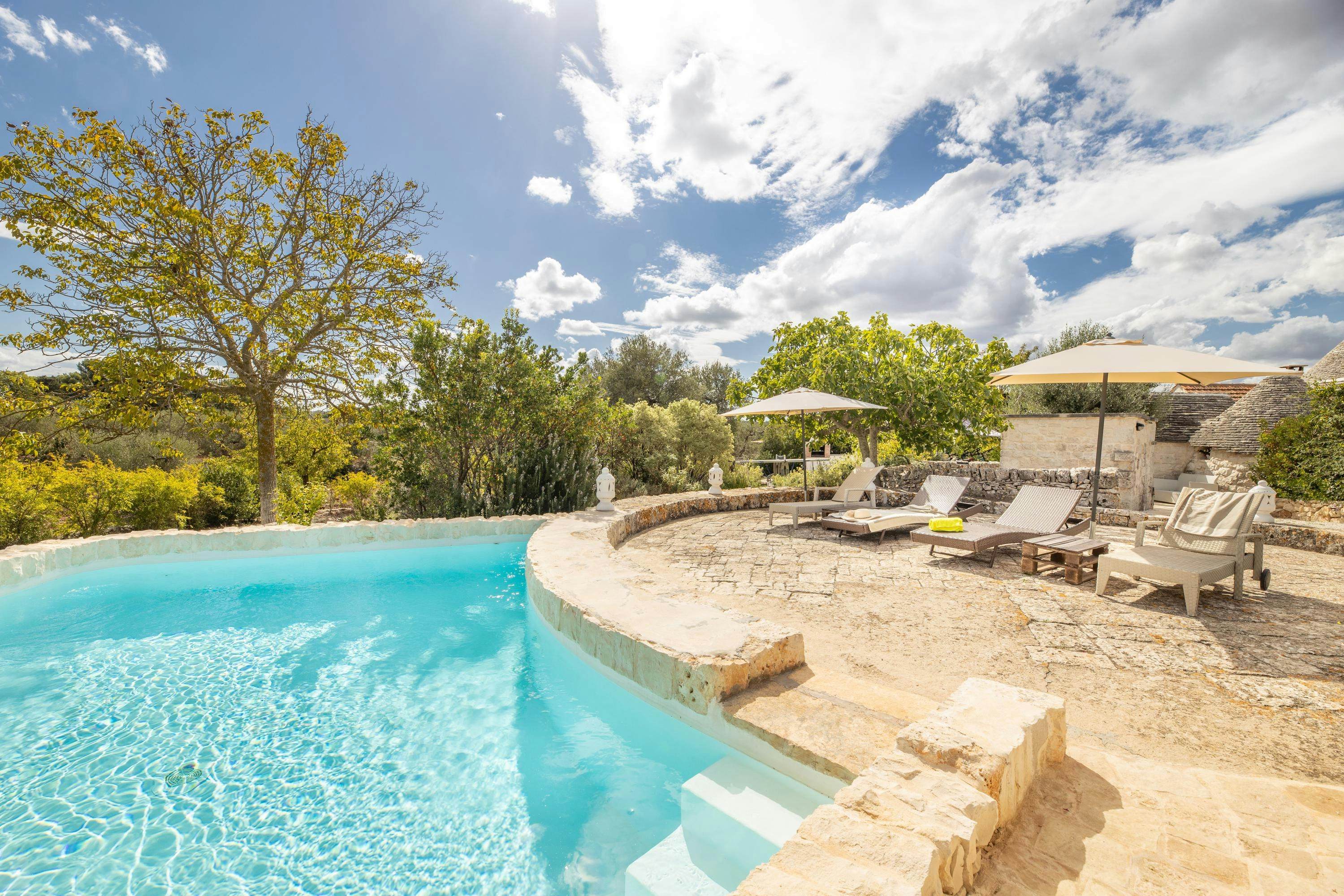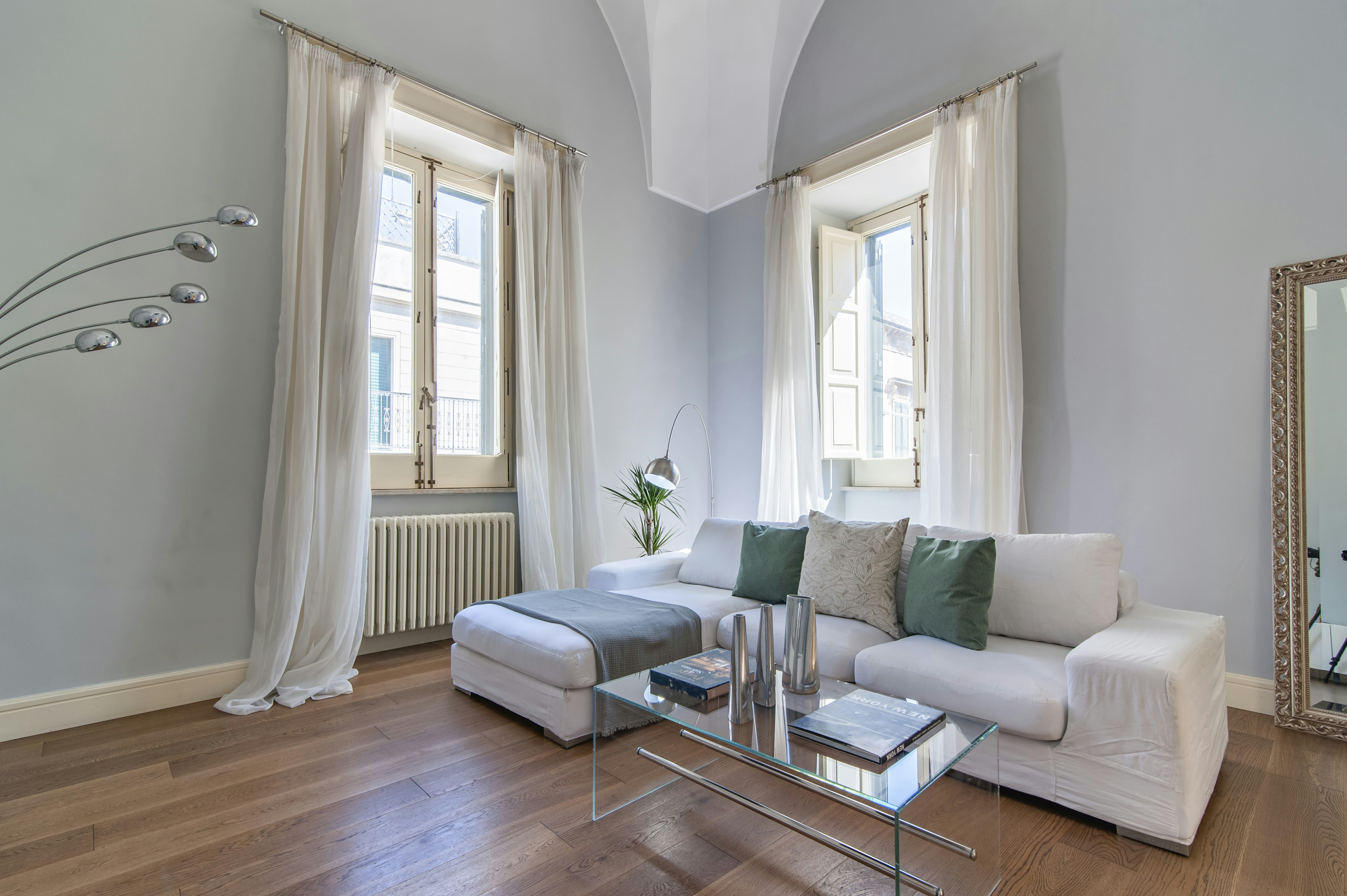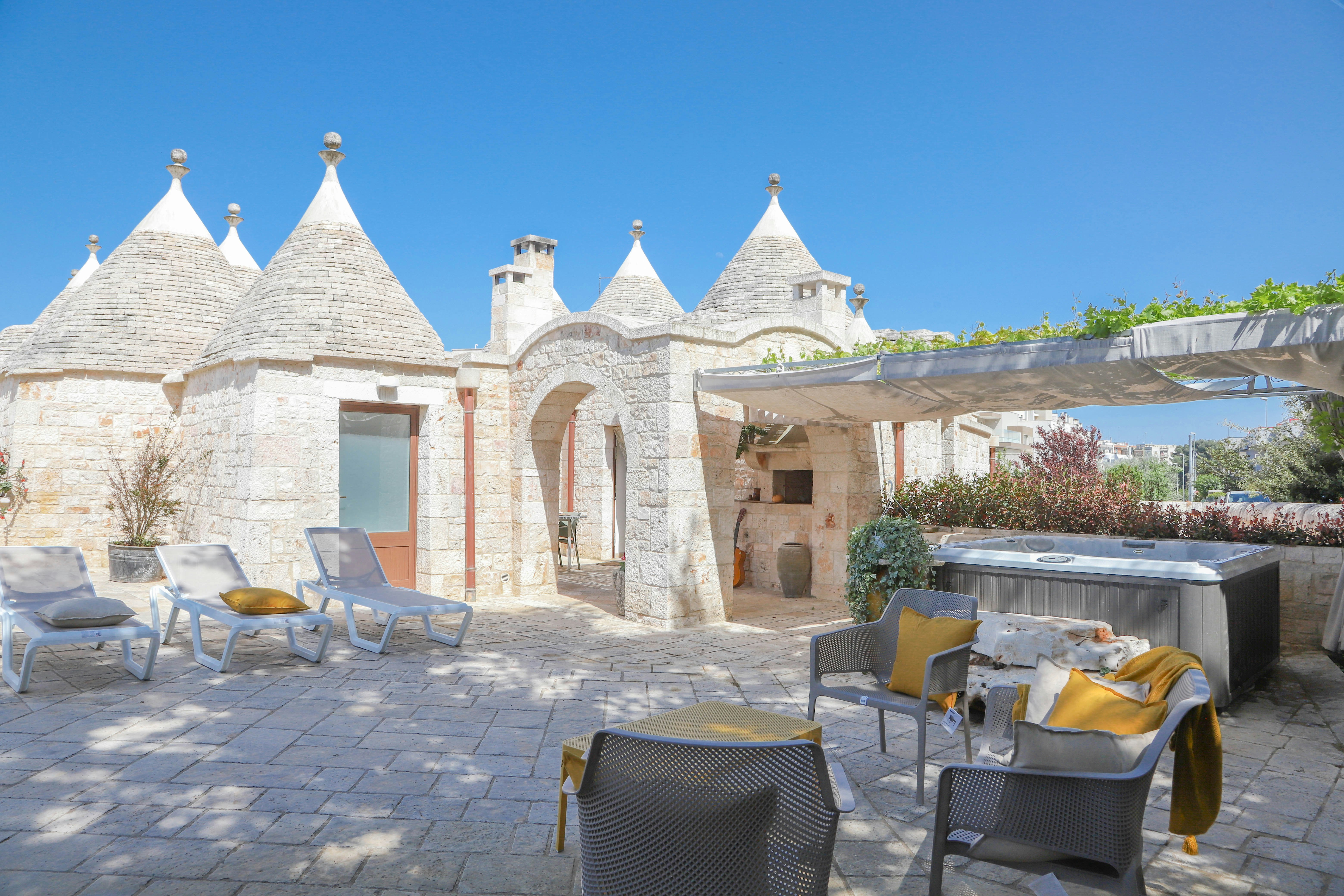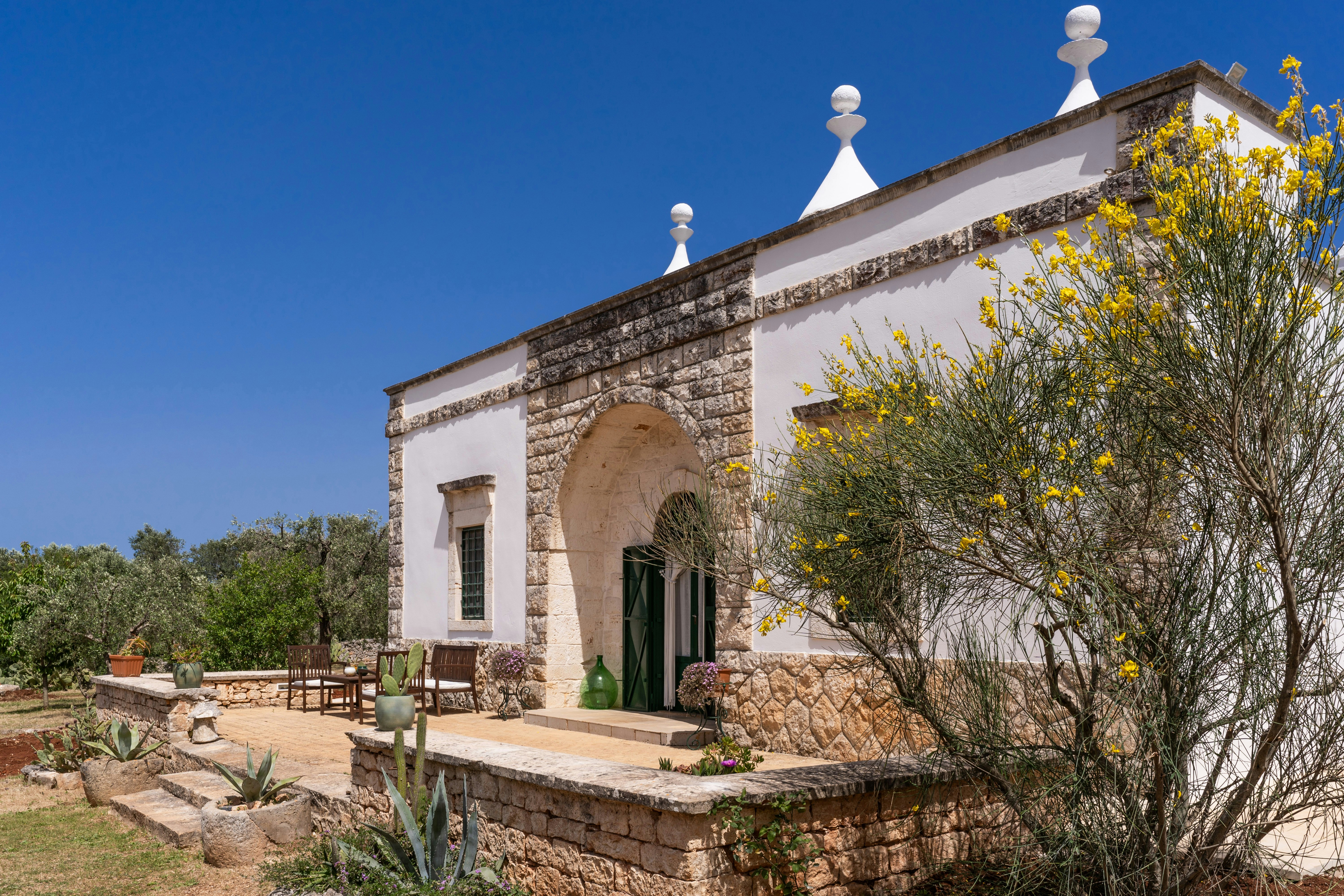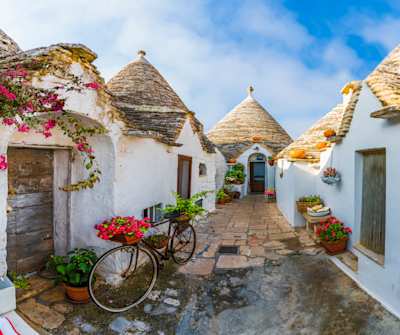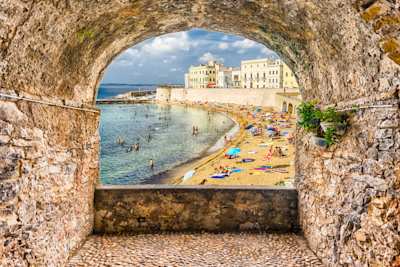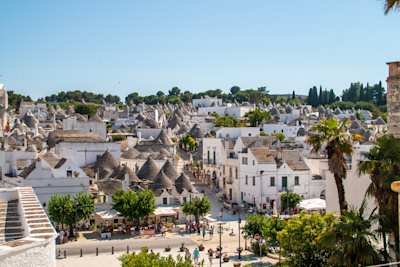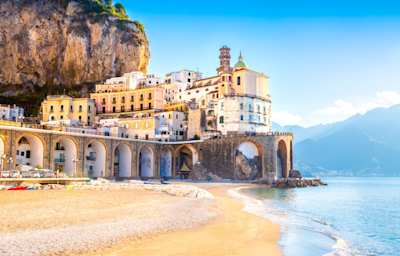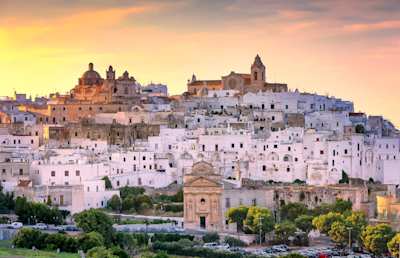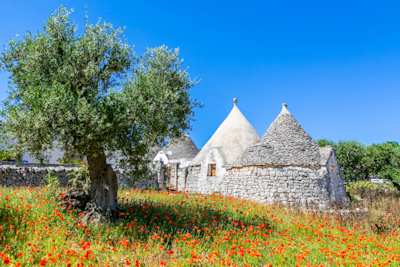The Essential Puglia Seven Day Itinerary
Here’s how to spend an unforgettable week in the heel of Italy’s boot
~
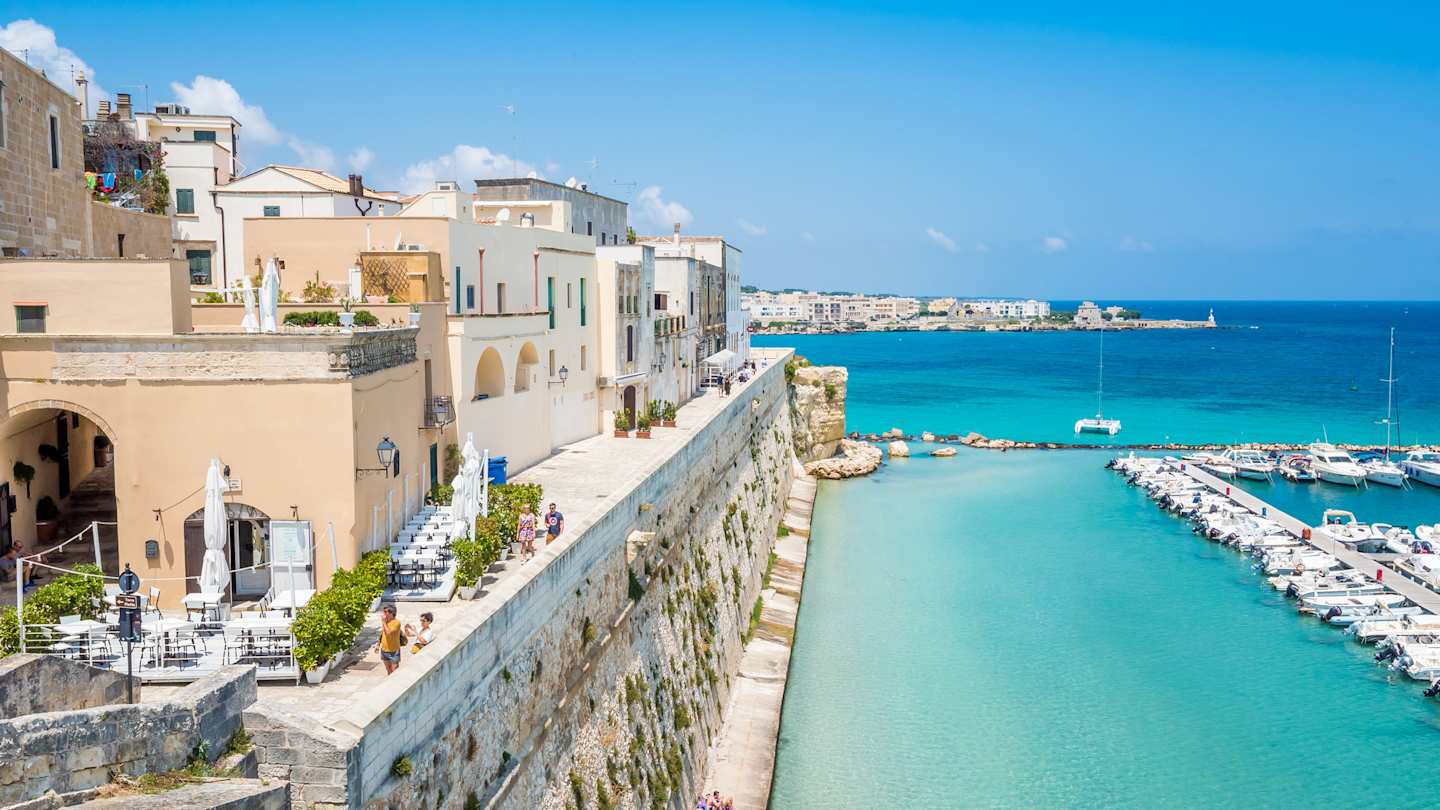
Although Puglia hasn’t yet experienced the boom in tourism faced by other parts of Italy (some may hope it remains so), that’s not to say it doesn’t have anything going for it. In fact, you may be surprised at just how diverse Puglia is. In a whole week, you can be driving through peaceful rural landscapes, sunbathing on sandy beaches, walking through forests, sightseeing in vibrant cities and wandering around small villages. Here at Plum Guide, we have all there is to know about travelling around the region. Read on for the very best Puglia itinerary for seven days.
Day One: Gargano
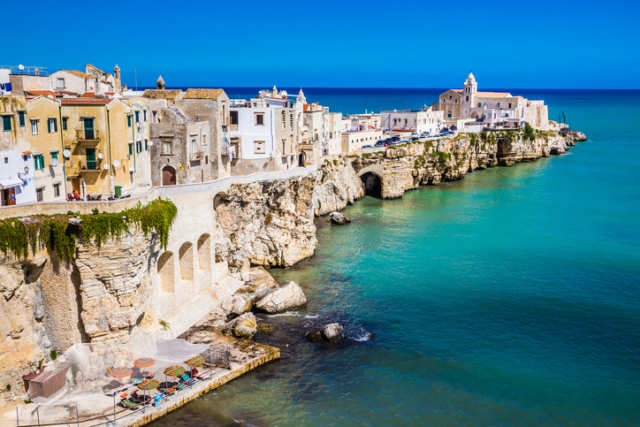
Old Town Of Vieste, Gargano Peninsula, Apulia
We can’t think of a better place to start your Puglia travels than the Gargano peninsula. Jutting out into the Adriatic Sea, this largely overlooked part of Puglia is a wonderful place to immerse yourself in nature. Mostly covered by the Gargano National Park and expanding more than 120,000 hectares, there is a lot to explore here.
Gargano is home to the Umbra Forest, the last remaining area of oak and beech trees in Italy. There are plenty of trails you can take to walk and cycle through this magical place, and if you’re here between April and May then you’ll get to admire over 85 different species of wild orchids growing in the forest.
Heading towards the coast you’ll come across a whole series of picturesque hidden bays. Backed by soaring limestone cliffs, the turquoise waters will entice you in for a swim or a snorkel. With many sea caves and fascinating rock formations to be found, the best way to see these up close is on a boat tour. You can also visit the Tremiti Islands, a group of five small islands with pristine beaches and nature.
Elsewhere in the Gargano are quaint little villages and towns which are worth visiting. Some of the most scenic ones include Vieste, Monte Sant’Angelo and Peschici, with their narrow winding streets and panoramic views.
Day Two: Bari
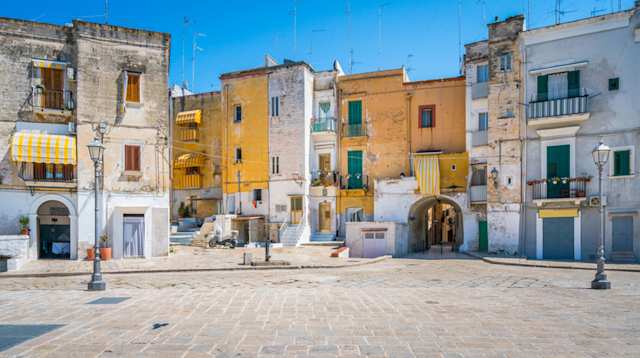
Citta Vecchia, the old town of Bari
On day two of your Puglia itinerary for seven days, head down to Bari, the capital of the region (although if this is your first point of entry to Puglia, head back to the city after a detour to Gargano). This port city has a lot of history and culture to discover, and we recommend starting in the Old Town. Made up of winding alleyways, find gems around every corner, like the 11th-century Basilica di San Nicola and the Cattedrale di San Sabino. On Via Arco Basso (more fondly known as ‘the street of orecchiette’), watch as local women sit at small tables moulding this pasta into little ear shapes—be sure to buy some to take home.
For lunch, both Piazza Mercantile and Piazza del Ferrarese are good options—the latter overlooks the marina and the sea, where you’ll find the Romanesque Vallisa church, one of the city’s oldest, as well as the remains of the Appia Traiana, a 2nd-century Roman road. Cool down on the nearby beaches of Pane e Pomodoro or Polignano a Mare before heading back to stroll down the Lungomare for a sundowner at one of the bars lining the promenade.
Day Three: Itria Valley
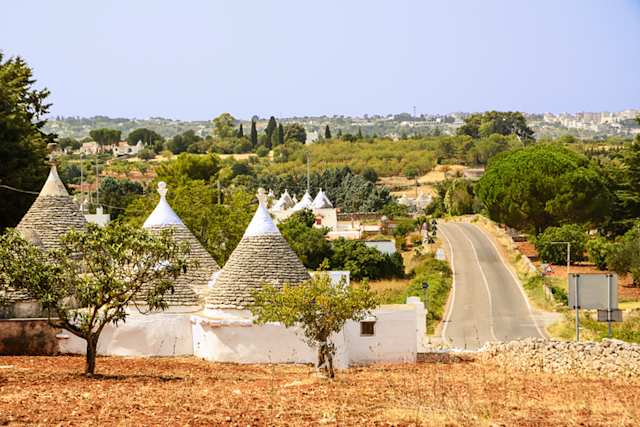
Trulli in the countryside of the Itria valley, Apulia
Leave the city behind and set out into nature again. The Itria Valley is a large region between the provinces of Bari, Brindisi and Taranto, comprising verdant olive groves, rolling green hills and vineyards. Aside from the beautiful landscape, the main attraction of the area is the whitewashed hilltop towns which have seemingly popped out of a storybook.
Locorotondo is one of the prettiest towns, with extensive views of the surrounding valley. Its lack of tourist attractions is its main appeal, and to visit is to get lost for a few hours amongst its tiny streets. Browse through the quaint ateliers, or enjoy a drink and a bite at one of the side-street cafes.
The more touristy Alberobello is the most popular place to visit in the Itria Valley. This is a UNESCO World Heritage Site, where you can find the largest concentration of 16th-century trulli. Traditional to the Itria Valley, these are whitewashed, dry stone huts with conical roofs made of limestone slabs. Wander around the cobblestone streets taking in the fairytale-like feel of the place.
Day Four: Ostuni
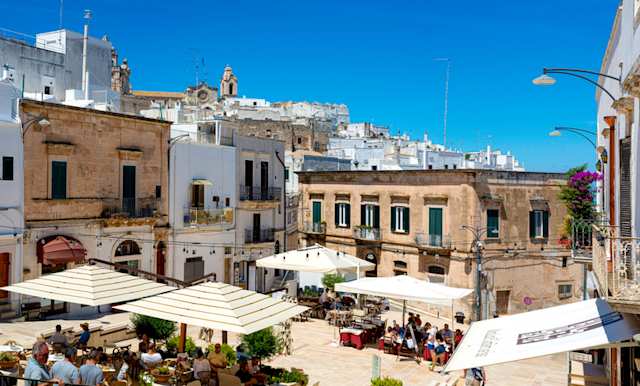
Ostuni square in Ostuni, Apulia
Still in the Itria Valley but slightly further out is Ostuni. Nicknamed the White City for its whitewashed buildings, this town is a labyrinth of streets and staircases winding their way up the hillside. Watching over the town at the very top is the 15th-century cathedral, a stunning display of Gothic, Romanesque and Byzantine architecture.
Like many other small towns in Italy, the best thing to do is to wander around. Get happily lost in the old town, ducking under archways and stumbling across colourful shopfronts and charming cafes. Treat yourself to a gelato from Cremeria La Scala and relax in Piazza della Liberta, Ostuni’s largest public square—this is a good spot for people-watching.
If you’re in town on a Saturday, be sure to pop into the market for the best local produce and crafts. Defensive walls surround Ostuni, and walking along them is the top thing to do here. Go at sunset to enjoy views of the olive groves and seaside lit up in a warm golden glow.
Day Five: Lecce
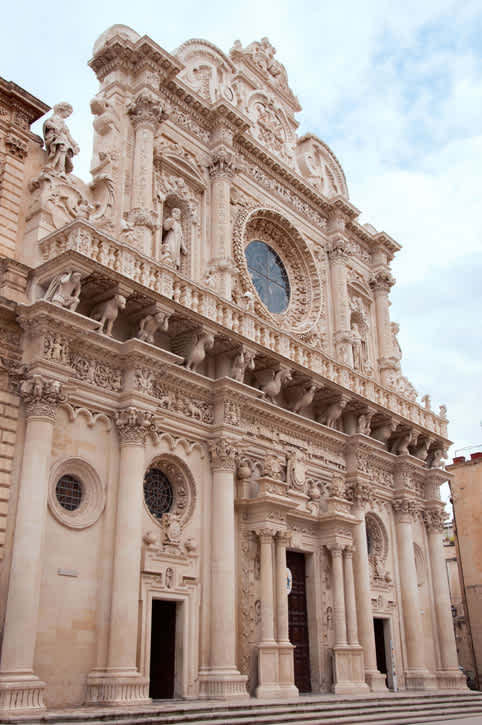
The Basilica di Santa Croce in Lecce, Apulia, Italy
Those in search of Baroque architecture should visit Lecce, also known as the Florence of the South. Everywhere you look you’ll see striking architecture and intricate details—the Basilica di Santa Croce with its gold accents and rose windows, and the Church of Saints Nicolò and Cataldo, with its elegant frescoes, are some of the finest churches around.
Hang out in the Piazza del Duomo, one of the most charming public squares in Lecce. Right in the historic old town, you’re treated to superb buildings and monuments, including the Lecce Cathedral, Episcopal Palace and the Seminary Palace. When you get hungry, the side streets leading off the square are packed with restaurants and shops.
For more explorations, head to the Piazza Sant’Oronzo to see the well-preserved Roman amphitheatre. Uncovered by accident in 1929 and tucked away down an unassuming side street, this gem remains in fantastic condition. When it gets too hot, escape the Mediterranean sun in the shaded Villa Comunale di Lecce, a lush garden complete with fountains, ponds and monuments.
Day Six: Otranto

The coastal city of Otranto with Aragonese castle, Apulia, Italy
On day six, head to Italy’s easternmost town of Otranto. Overlooking the Strait of Otranto where the Adriatic meets the Ionian Sea, this town has seen centuries of invaders, resulting in a wonderful mix of architectural styles. One of its must-visits is the 15th-century Aragonese castle with its thick walls and robust towers. The castle is now a museum with ever-changing exhibitions, and we recommend taking a guided tour to explore the chambers, halls and tunnels. Another notable building is the 11th-century Romanesque cathedral with its stunning floor mosaic and a spooky collection of skulls of martyrs who died for their faith in 1480.
While there is plenty to do in town, Otranto is very much a beach destination, so when you’re not sightseeing, laze about on the town’s white sandy beach or sit back with a cold drink on the promenade. If you want to escape the city beach and be amongst nature, take a short drive to Porto Badisco. Enclosed by vegetation-topped rocky granite ridges, the calm bay offers impossible blue waters to jump into.
Day Seven: Santa Maria di Leuca
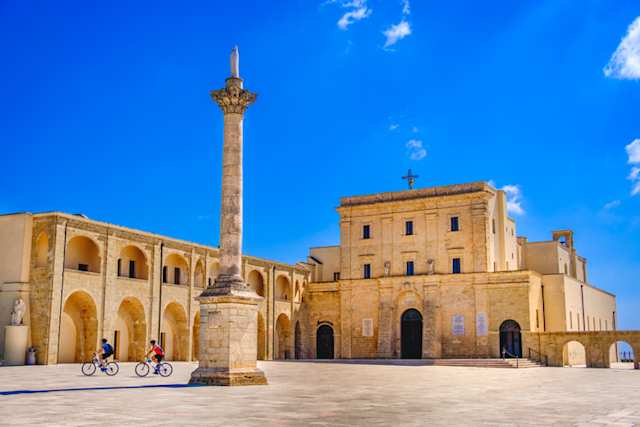
Santa Maria di Leuca Basilica and Corinthian Column, Apulia
On the final day of your Puglia itinerary for seven days, take it easy by the sea. Lying on the southernmost point of Italy’s heel, Santa Maria di Leuca (often referred to as just Leuca) has long been a coveted destination for Puglia’s wealthiest residents. You can tell just by walking along the seafront, where magnificent Art Nouveau villas look out over the Ionian Sea.
One of the most popular activities in Leuca is to take a boat tour to discover the collection of fascinating sea caves. Each one has its own curiosities, and with intriguing names like Cave of the Three Doors, the Devil’s Cave and the Lovers Cave, you’ll find it hard to resist swimming and snorkelling in the azure waters.
When you’re not exploring the coast, unwind on the beach of Felloniche, Posto Vecchio, Torre Vado and Pescoluse, all of which offer excellent facilities like lidos, bars and restaurants. Come late afternoon, take a walk along the coastal path up to Leuca’s lighthouse, which stands 47 metres into the sky. The views from up here are unbeatable.
